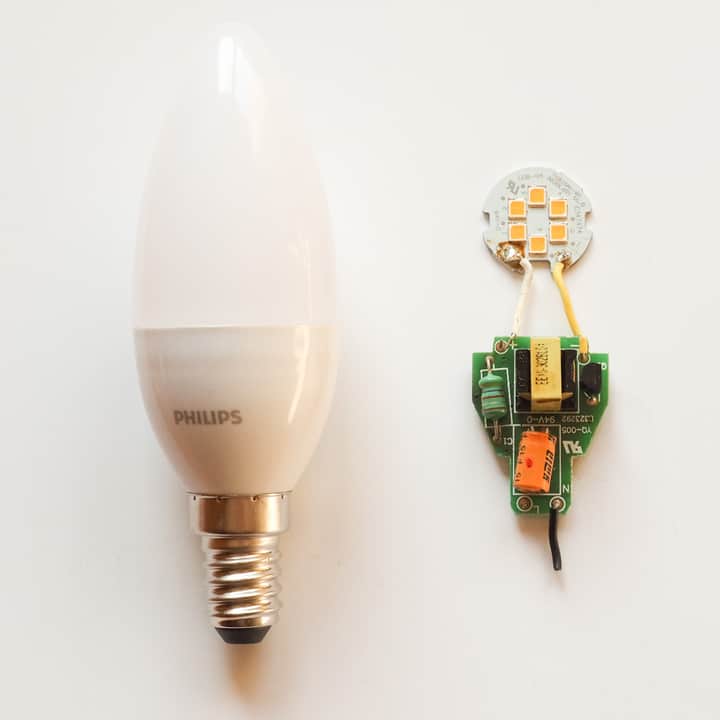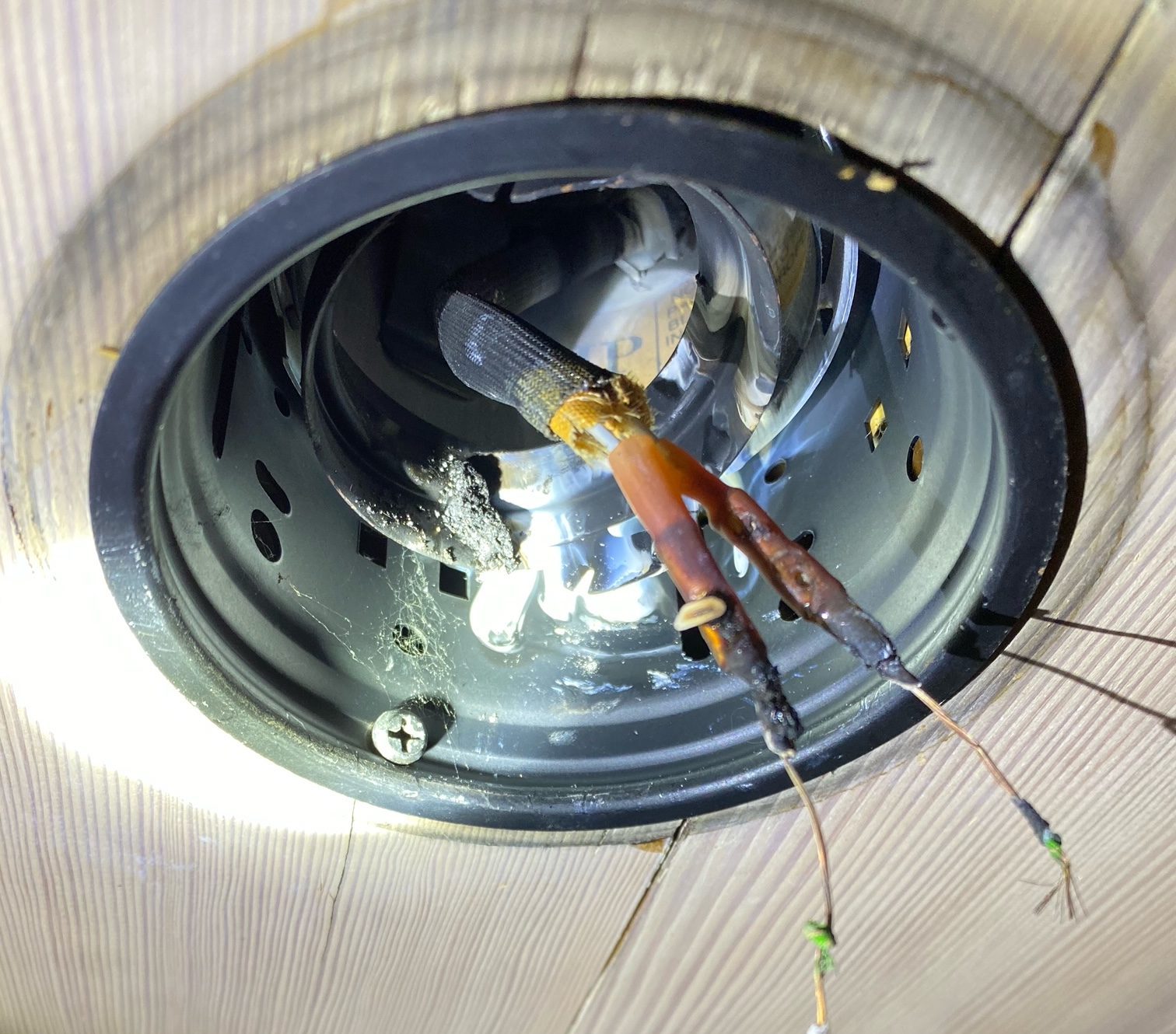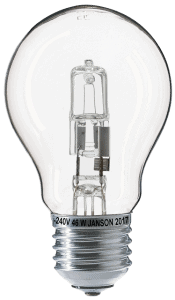Are you on the fence about installing LED bulbs in your fixtures around the house, maybe because someone warned you about melting plastic?
Is it actually possible?
LED bulbs won’t melt plastic unless there is a serious malfunction. They do get hot at the base, where they connect to the fixture, but not anywhere near the level needed to melt a plastic fixture.
Nothing to worry about then, right? Well let’s delve a little deeper:
- Can hot LED lights melt plastic?
- What to do with a melted bulb or fixture
- What other kind of lights can melt plastic
LED Bulb Gets Hot At Base: Can It Melt?

LED lights do get hot at the base of the bulb, but there’s never enough heat to melt a plastic light fixture unless you’ve bought faulty bulbs, have a wiring issue, or you’ve bought cheap fixtures made from poor-quality materials.
The base is the hottest part of an LED light because the heat is drawn away from the diode by a heat sink. LED lights function poorly when heated, so they’re designed to move heat away from the bulb and out via the base.
But considering how most light bulb fixtures are made using polycarbonate, which has a melting temperature of at least 280 degrees Centigrade or 536 degrees Fahrenheit, a bulb should never get hot enough to cause melting.
Even their softening point is 392°F or 200°C which is too high to be troubled by LED lights. And to make them safer, flame retardant chemicals are used to treat the materials used in making fixtures.
Some light fixtures might be made using a cheaper plastic with a lower melting temperature, or without the flame retardants, but even then you’d likely need a poor-quality bulb or a wiring issue to cause your LED lights to overheat to that level.
LED lamps and other enclosed types of lights – retro mason jar lights, or sealed lights – will get hotter and are a greater fire safety risk because the heat can’t escape as easily.
The temperature inside these fixtures can be a lot higher, but it still shouldn’t generate as much heat as is needed to damage the surrounding material.
How Hot Do LED Bulbs Get?

LED bulbs tend to heat to between 145°F to 175°F (63°C to 80°C) at the base, where they are hottest. This depends on the quality of the bulb and the heat sink used.
Most tests show that the surface of the bulb’s enclosure or case around the diode is only about 85°F or 30°C. That is only a little above room temperature on average. This is after the LED has been running for at least 30 minutes.
What Is The Melting Point Of LED Bulb?
An LED bulb’s housing is made from the same kind of polycarbonate plastics as a light fixture, and so it won’t melt until it hits at least 280°C or 536°F – often higher.
Even when companies manufacture LED bulbs as cheaply as possible, it would need a serious issue ot get the temperature range so extremely hot that it melted the bulb itself.
LED Light Bulb Melted In Socket: What Should I Do?
If your LED light bulb has melted in the socket, or caused the fixture itself to melt, disconnect the power and replace both the bulb and the fixture. Also, check the wiring to see if there are loose connections that could have caused the light bulbs to melt.
It should be obvious, but anytime LED lights get hot enough to melt plastic fixtures, you can’t reuse them. The high melting point of the plastic polymers used – especially if you’ve got decent fixtures made using flame retardant materials – means there’s a serious issue you need to resolve.
Disconnect the power completely, even if other lights on the circuit seem OK. Then check all the electrical circuitry for loose wires. These can cause arcing, which generates a lot of heat and is a fire hazard.
If the wiring seems OK, you can swap the bulb and fixture for new ones. As long as you buy good quality LED lights and plastic fixtures, you shouldn’t have a repeat of the problem.
Still, monitor it – if you notice an excessive amount of heat from that fixture, switch off the power, remove the bulb, and call a professional.
What Type Of Light Can Cause Plastic To Melt?
While a plastic fixture should withstand any light, some traditional incandescent bulbs and halogen bulbs can generate heat to a level that will soften the fixture.
A halogen or incandescent bulb’s electrical energy generates a lot more heat than LEDs – they average at around 180°C/357°F.
While this is still below the melting temperature for the types of plastic used, all it takes is one incandescent bulb operating at around 20% higher temperature than normal to cause problems.
Those are the average temperatures, after all – the maximum temperature (particularly of poorly-made bulbs) could be a lot higher.
With these bulbs, so much electrical energy is wasted as heat energy, which is why it’s better to get LED lights.
Final Words
LED technology has come a long in upgrading its lumen output, color temperature, and, most of all, safety features.
Considering you are using bulbs and fixtures indicated by manufacturers, you should not have melting plastic fixtures. Practice good safety and keep fingers away from bases, or touch after the bulb has cooled down.
You can learn more about the heat generated by LED lights and whether they can cause a fire with my other guides.
Looking for an LED bulb but not sure what type you need?
Check out my free bulb picker and select the right bulb within few clicks.



